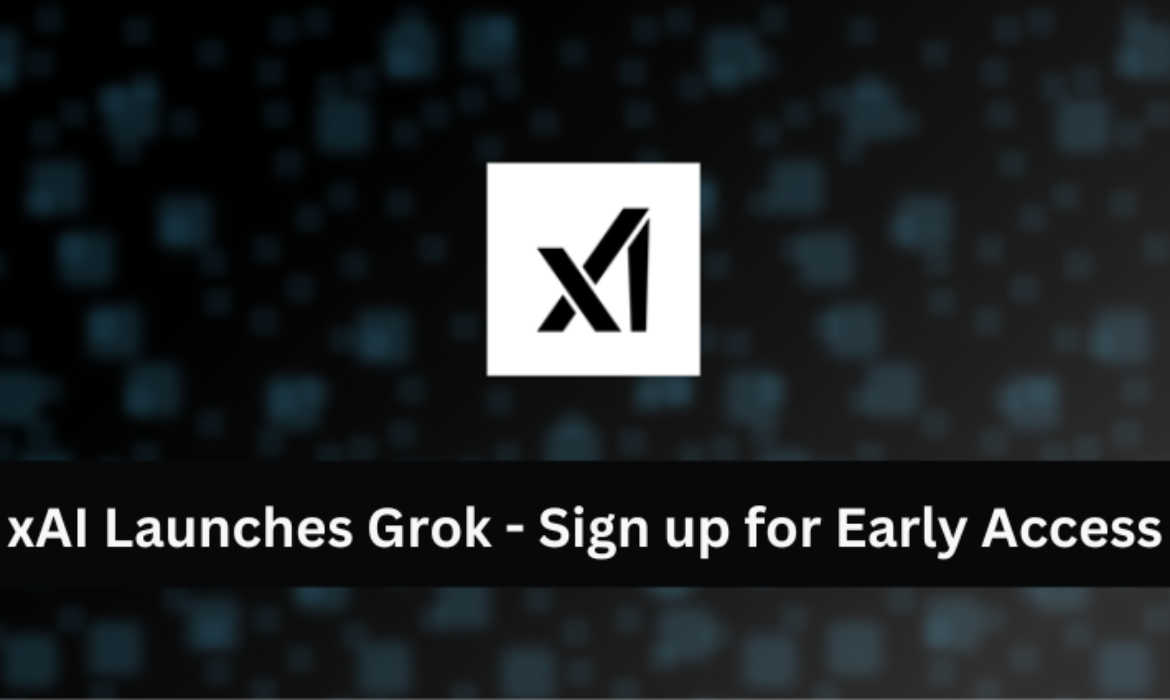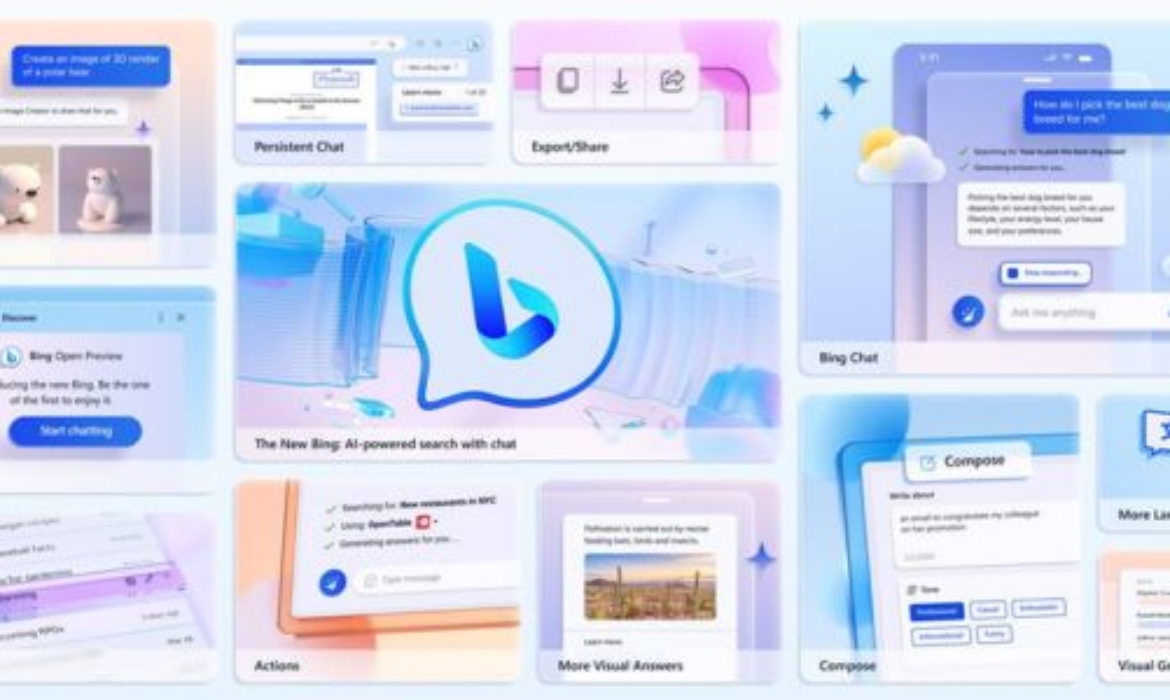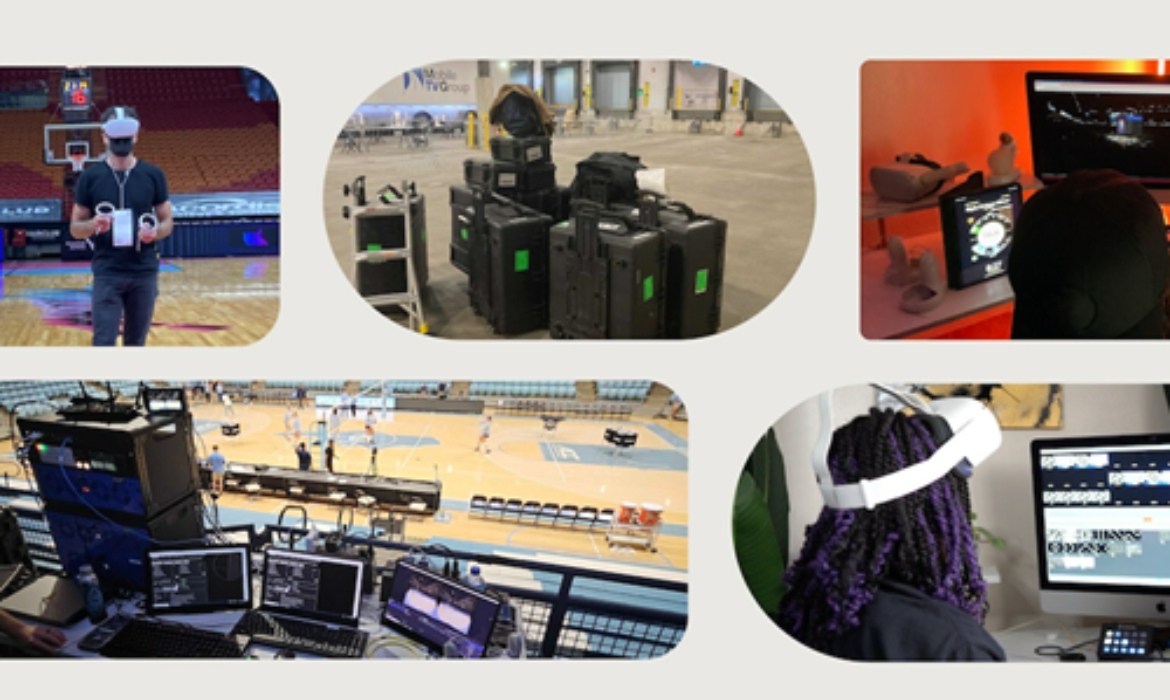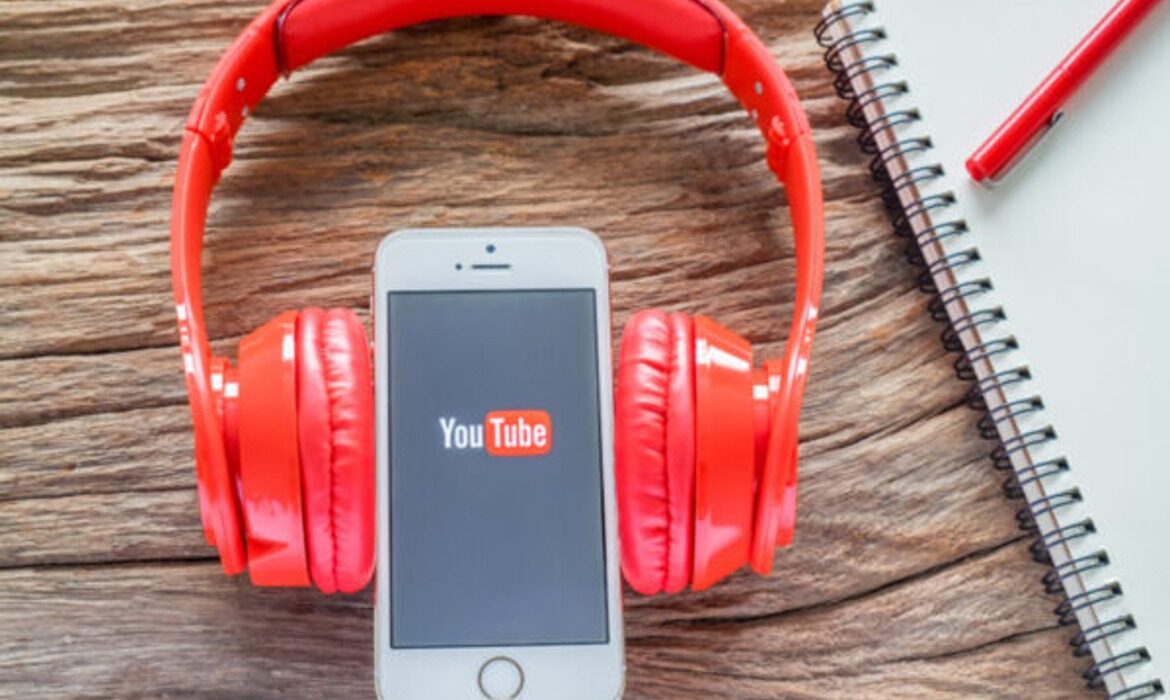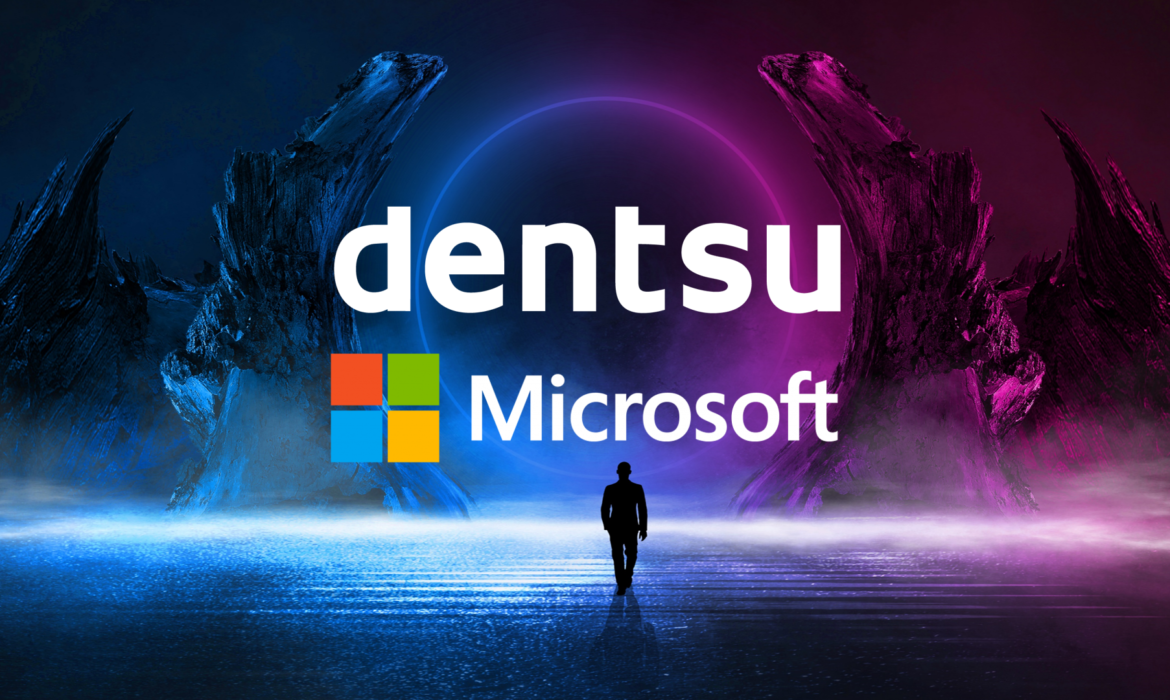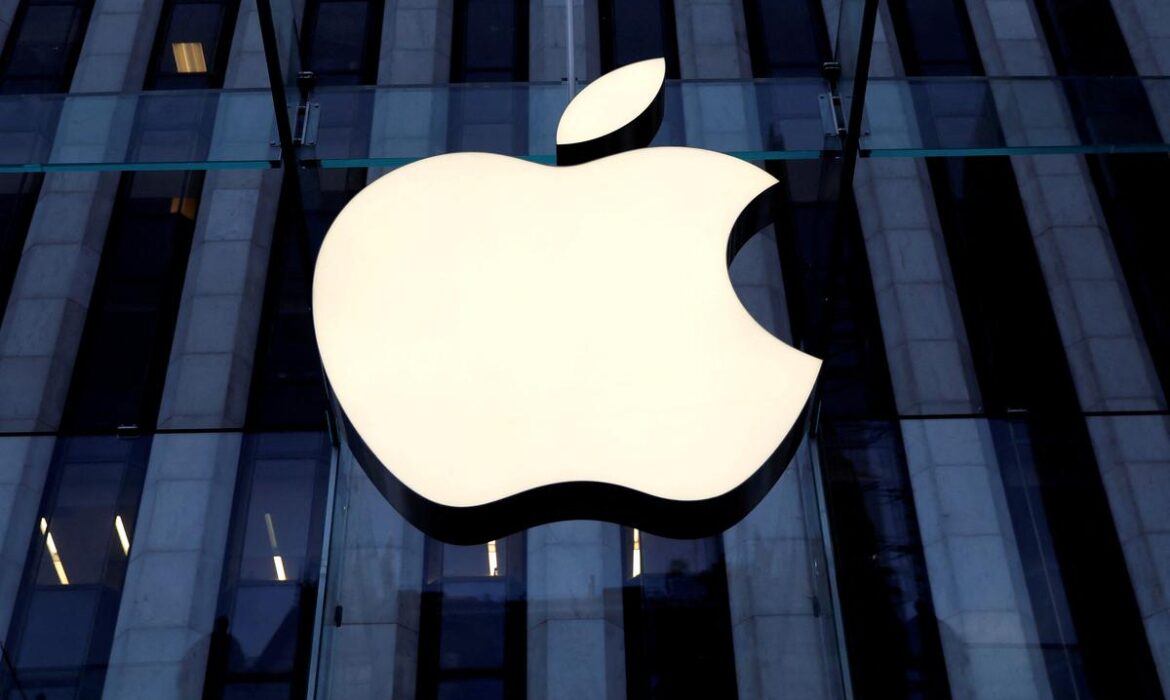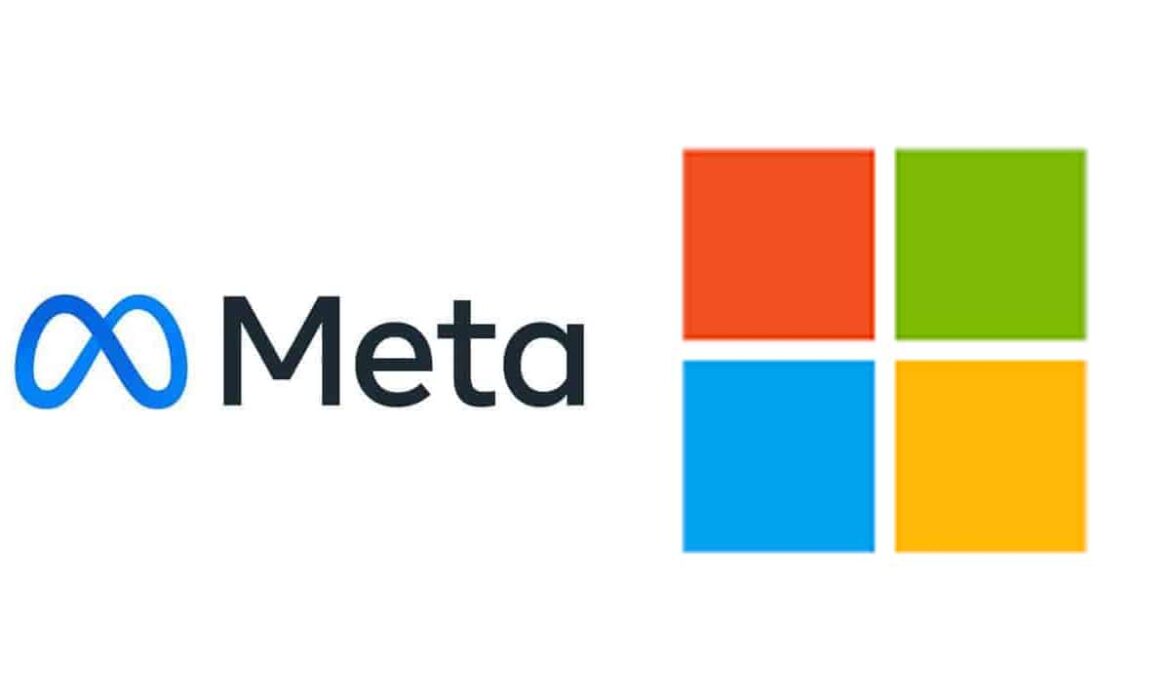Elon Musk Officially Enters Generative AI Race with Grok AI Chatbot
Elon Musk is officially kicking off the race for generative AI with the X platform. Elon Musk’s new artificial intelligence company, xAI, unveiled Grok, its first-ever AI chatbot. Prior to its wider release, the prototype will only be accessible to a small group of users during its first two months of training. Grok is going to be incorporated into the social media network X soon. After it emerges from beta, it will be made available to all X Premium+ subscribers and function as a stand-alone app. X unveiled its X Premium+ tier, which removes advertisements from the timeline and grants access to all X Premium features for $16 a month.
xAI’s Grok system is designed to have a little humor in its responses pic.twitter.com/WqXxlwI6ef
— Elon Musk (@elonmusk) November 4, 2023
What is the Grok AI chatbot?
Grok is anticipated to challenge OpenAI’s ChatGPT, according to xAI. Grok is the first product from Elon Musk’s recently founded AI startup, xAI. The company claims that Grok is an AI that was inspired by “The Hitchhiker’s Guide to the Galaxy” and is designed to be able to respond to practically any query and, even more challenging, recommend what queries to pose. According to the AI startup, Grok is built with a rebellious streak and a sense of humor to respond to inquiries. If a user detests humor, it advises against using it. Grok has an advantage because it can access data from the X platform as well. Musk shared a side-by-side comparison of another AI chatbot with less up-to-date knowledge and Grok’s response to queries.
Example of Grok vs typical GPT, where Grok has current information, but other doesn’t pic.twitter.com/hBRXmQ8KFi
— Elon Musk (@elonmusk) November 5, 2023
According to xAI, Grok is presently in its early beta phase. The company assured users that, with their assistance, the AI chatbot would advance over the next few weeks. As with any Large Language Model, or LLM, Grok is not immune to producing inaccurate or contradictory data. After just two months of training, the prototype is now in its beta phase and can be tested by a small group of users before the company releases it to the general public. For a chance to use the bot, users can join a waitlist. Using Elon’s army of citizen journalists as its model, Grok is probably a right-leaning disinformation machine that allows users to share anything they want on the app.
Read More: UAE’s G42 Unveils ‘Jais’, A Powerful Open-Source Arabic AI Model
Where is the name Grok derived from?
Robert A. Heinlein was the first person to create the term ‘Grok’ in his 1961 science fiction book “Stranger in a Strange Land.” “Grok” is a Martian term used in the book that has no exact translation into English. The precise meaning of the word has been disputed by critics, but they have ultimately agreed that it refers to a profound sense of intuition or empathy. It is simply defined as a translative verb that means “to understand profoundly and intuitively” by Merriam-Webster.
Why Grok?
By creating and improving Grok, xAI aims to
- Input generation: Get input and make sure AI is developed to produce tools that are most beneficial to all people. The company thinks it’s critical to create AI tools that benefit individuals from diverse backgrounds and political perspectives. In accordance with the law, it also seeks to give users access to AI tools. Grok aims to investigate and showcase its methodology in a public setting.
- Empowerment and innovative research: xAI aims to make Grok a potent research assistant that anyone can use to quickly access pertinent information, process data, and generate new ideas.
All Inclusive Platform
After two months of development, Grok will be released to all X Premium+ subscribers once it has completed testing. Musk has expressed his desire to transform X from a social network into a multipurpose app similar to Tencent Holding Ltd.’s WeChat in China. Grok would be crucial to creating that; although xAI is a different company, it says it plans to collaborate closely with Tesla, X, and other companies.
Quick look at xAI
Elon’s AI system differs primarily in that it is designed to be anti-woke and to censor less potentially sensible topics. Elon had taken issue with what he saw as ChatGPT’s censorship of some answers on particular subjects. In order to better represent truth according to his own definition and experience, he started his own artificial intelligence project. The CEO of Space X and Tesla seems to be presenting xAI as a rival to businesses such as OpenAI, Inflection, and Anthropic. In July, xAI made its debut with a team that included former workers from DeepMind, OpenAI, and other companies. The company’s stated goal is to develop artificial intelligence in order to increase our understanding of the cosmos. Musk has previously expressed his opinion that modern AI developers are leaning too much toward politically correct systems. However, xAI’s goal is to create AI for people of all backgrounds and political views.
Read More: Microsoft Empowers Publishers with Content Control for Bing Chatbot
How will the Grok AI Chatbot?
Elon thinks that Grok will be a more reliable source of information, especially when it comes to breaking news stories. This is because Grok gets its data from X. Furthermore, it is permitted by X’s updated user agreement to use users’ posts as fuel for the system, . Additionally, X has been attempting to block access to its API for other generative AI projects, particularly OpenAI, with whom Musk has personal issues. Grok and X’s other AI projects will therefore be among the select few who have complete access to the entire Y firehouse of data.
Ongoing Issues with X
This should be a big benefit in a few ways, at least theoretically. However, Musk made numerous changes to the app, including a number of updates meant to discredit mainstream news sources. It has also caused X to lose popularity as a major forum for news discussions. As a result, many journalists have moved to other platforms. And while X boasts 244 million daily active users, very few of them actually post anything on the app. Hence any change in this regard is significant. Eighty percent of its users, according to X, are in read-only mode and never post or interact in any way. This indicates that X’s daily input of 100 million unique posts is unavailable.
Read More: Chinese AI Firm Baidu Debuts ERNIE 4.0 Chatbot Competing with GPT-4
Gamers8 2023: Riyadh’s Premier Esports Event Powered By Generative AI
Given the success of the 2022 event, there is a great deal of excitement surrounding the commencement of this year’s Gamers8 event. As a significant player in the industry, Gamers8 has cemented Riyadh’s status as the region’s esports hub. The Saudi Esports Federation is in charge of the tournament. The goal of this year’s ‘Land of Heroes’ is to outperform last year’s in every way. This includes the size of the prize pool as well as the scope of the sports and activities held in Riyadh. Moreover, by using generative AI capabilities, the Gamers8 2023 event is setting new benchmarks.
New Industry Standards at Gamers8 2023
In 2023, Gamers8 succeeded in bringing gaming and esports to Riyadh and established a new benchmark for the industry. But for the 2023 season, the Extend AdNetwork-which is in charge of strategy, planning, and execution—took a bold step to raise awareness and encourage significant participation in the event. This was accomplished by breaking down barriers and questioning accepted wisdom, substituting the conventional method for tech-driven, content-centered integration. Additionally, it aims to foster a closer bond with the tech and gaming industries.
Extend AdNetwork – Smartifai’s Generative AI integration
Extend, in collaboration with Smartifai, announced a plan aimed at captivating users and raising awareness of events. The core of this strategy is ChatGPT’s integration with contextual technology. It will bring Gamers8 unprecedented prominence. It is also intended to grab users’ attention and will make use of generative AI. It did this by integrating three different visual messages into the ChatGPT ad format, which allowed it to navigate consumers to ad content while providing quick and clear content summaries in both Arabic and English. This strategy promoted deeper involvement and improved the reading experience. It also formed alliances with publishers of video games, sports, music, and entertainment.
ChatGPT Ads campaign launched on a global scale
In order to launch the campaign globally, in-screen and in-image advertisements were used in international markets. It focused primarily on ChatGPT Ads in regional markets like the UAE and KSA. The outcomes are nothing short of extraordinary. With 4.7 million distinct persons connected to the campaign, it had excellent reach and generated half a million ad interactions. Interaction rates increased as the campaign went on, reaching a stunning 16.6% in the last week. It outperformed regional display and social expectations. The social context of the audience—especially that of people who are actively involved in gaming and tech communities—was understood through the use of addressable context.
Read More: Chinese AI Firm Baidu Debuts ERNIE 4.0 Chatbot Competing with GPT-4
A unique generative AI-led ad format
The ChatGPT-led format was carefully designed with Gen Z and Generation Alpha in mind. With over 21,000 unique content summaries and an astounding 7% interaction rate, it effectively catered to their need for rapid satisfaction. Remarkably, about seventy percent of these exchanges started in Saudi Arabia. Furthermore, the natural language processing method performed a good job of interpreting the sentiment of the text. By using engaging content summaries and call-to-action prompts, it made it possible to understand the audience’s reading context and start a conversation with Gamers8. This tailored strategy made sure that Gamers8 connected with its intended audience more deeply. Moreover, using Motion Context enabled the hyper-personalization of Gamers8 messages by utilizing real-time gaming events. It gave each person a dynamic and captivating experience.
A successfully executed campaign
The Gamers8 event’s physical site saw over 3500-foot traffic as a result of the campaign’s success. The Saudi Esports Federation’s Head of Marketing and Branding, Adel AlMeqren, underlined the achievement’s historical significance. He declared that Saudi Arabia will become a global hub for gaming and esports thanks to Gamers8. He went on to say that Gamers8’s openness to doing something completely different and novel in the market shows how committed the company is to innovation and how flexible its marketing tactics are. His comments highlighted Gamers8’s willingness to adopt and successfully implement innovative concepts, illuminating their resolve to stray from conventional marketing techniques. This innovative strategy sets Gamers8 apart and establishes Saudi Arabia as a trailblazing esports and gaming innovation hub.
Beyond smashing records, the 2023 Gamers8 event created a road of success and paved the way for a future in which gaming and esports take center stage in the Kingdom of Saudi Arabia and beyond. Gamers8 is still at the front of this evolving gaming industry, pushing the boundaries and setting records for success.
Here’s what they said
Tareq Al Awar, Head Of Digital Media at Extend, said,
This is a testimony to push our efforts to stay at the forefront of innovation and bring a unique execution to our clients, introducing the latest tech as an early adopter in the Saudi market. We are continually striving to establish ourselves as a key differentiator in our digital offerings to our clients. When we proposed this first-of-its-kind execution, we were confident of achieving exponential results by applying a unique use-case of technologies like Generative AI and its applications to advertising that enhance the user experience and set new industry standards for creativity and engagement.
Herman D’Souza, Co-Founder of Smartifai said,
Extend’s supervision and strategic contributions significantly influenced the campaign’s innovative approach. Their involvement was crucial from the campaign’s inception, actively participating in the development of launch strategies that seamlessly integrated advanced technology. Tareq’s hands-on engagement continued throughout the various phases of the campaign, offering valuable insights and expertise to ensure its smooth execution. This highlighted the significance of a strategic partnership that understands the client’s vision and objectives, enabling them to embrace cutting-edge technologies, adapt to changes, and elevate our region to meet global standards. Islam Haggag, Media Manager, played a vital role in orchestrating the campaign’s media presence and impact, further reinforcing the synergy between collaboration and execution in achieving remarkable outcomes through the Gamers8 unique activation.
Read More: Microsoft Advertising Enhances Search and Ads with Generative AI
Mistral AI Unveils Mistral 7B, An Open-Source LLM with 7.3B Parameters
Mistral AI announces the release of Mistral 7B, an open-source language model with 7.3 billion parameters. French artificial intelligence firm Mistral AI recently raised a sizable seed investment. With its first major language model (LLM), Mistral 7B, the business set out with a goal to transform generative artificial intelligence (AI). Furthermore, the business supports a community-driven development strategy in an effort to compete with huge proprietary AI solutions. Along with its enormous stature, it is causing a stir due to its outstanding powers, which surpass those of its larger competitors. The model is completely free to use and claims to outperform others of its size.
A startup on the rise
Alumni from Google’s DeepMind and Meta formed Mistral AI, a firm with headquarters in Paris. The business made its debut earlier this year with an unprecedented $118 million seed investment round and its recognizable Word Art logo. Mistral AI was thrust into the spotlight by this funding, the largest seed round in European history. Its goal is simple: to make AI useful for businesses by utilizing contributions from customers and publicly available data. The business has begun the process of achieving this goal with the launch of Mistral 7B.
Mistral Open models for AI are designed to provide better adaptability, enabling adaptation to particular tasks and user needs. This strategy is promoted as useful for companies looking to retain performance while keeping expenses down. The business also thinks open-source models will be essential weapons in the fight against AI’s ethical problems. They consist of bias and censorship. The capacity to audit generative models for errors and abuse is becoming more and more important as they continue to have an impact on society.
Mistral 7B can be a game-changer
Mistral 7B is not a typical LLM. It surpasses larger versions like Meta’s Llama 2 13B with its modest 7.3 billion parameters, creating a new benchmark for power and efficiency. In addition to being excellent at English language tests, this model also exhibits exceptional coding skills. This adaptability makes a variety of enterprise-focused applications possible. Mistral 7B is remarkable for being open-source and distributed under the Apache 2.0 license. This indicates that there are no restrictions on who can customize and use the setting. It may consist of enterprise scenarios and local or cloud-based apps.
Mistral AI thinks that a community-driven, open-source strategy can outperform the black-box methods that others have established as the industry norm. Mistral proposes that community-backed solutions are the way of the future by drawing parallels with the open-source revolutions in operating systems and web browsers. With the release of Mistral 7B, the company has taken its first big step toward developing specialized models that can compete with more substantial and well-established AI solutions. Mistral 7B is an improvement over other tiny LLM, such as 2. At far lower computing costs, it provides comparable capabilities.
How to Use Mistral 7B for Free
Hugging Face and GitHub both offer the Mistral 7B model for download along with documentation. Users can also communicate with the Mistral 7B Instruct Model using the Perplexity labs. Additionally, the business launched a Discord channel for teamwork and problem-solving.
magnet:?xt=urn:btih:208b101a0f51514ecf285885a8b0f6fb1a1e4d7d&dn=mistral-7B-v0.1&tr=udp%3A%2F%https://t.co/OdtBUsbMKD%3A1337%2Fannounce&tr=https%3A%2F%https://t.co/HAadNvH1t0%3A443%2Fannounce
RELEASE ab979f50d7d406ab8d0b07d09806c72c
— Mistral AI (@MistralAI) September 27, 2023
Read More: UAE’s G42 Unveils ‘Jais’, A Powerful Open-Source Arabic AI Model
Benchmarks are more powerful than words
Despite only recently entering the market, Mistral 7B has already established its worth in benchmark tests. The model frequently outperforms open-source competition in head-to-head comparisons. It easily defeats Llama 2 7B and 13B, displaying its versatility. One of Mistral 7B’s primary advantages is the use of Grouped Query Attention (GQA) for extremely quick inference. Additionally, Sliding Window Attention (SQA) is used to manage longer sequences with minimal computing overhead. Its performance is improved across the board thanks to this novel method.

Image credit- Data Economy
Improving cost-performance ratios
The cost-effectiveness of the Mistral 7B’s performance is an attractive feature. We can appreciate the memory savings and throughput improvements offered by computing “equivalent model sizes” by doing so. Mistral 7B performs as well in reasoning, comprehension, and STEM thinking as a Llama 2 model that is more than three times as big.

Image credit- Data Economy
The Future of open-source AI
A potentially strong and open-source rival to current LLM like Mistral 7B that offers more customization options and more control over data security may present new chances for enterprises to use AI. The movement to open-source generative models mark a critical turning point in the AI sector, challenging established proprietary models on moral and technical grounds.
Among language AI models, Mistral 7B marks a notable advancement. It has the potential to revolutionize how businesses use artificial intelligence for a variety of applications thanks to its small size, open-source nature, and exceptional performance. We may expect even further advancements in artificial intelligence as Mistral AI keeps on innovating.
Here’s what they said
The company said in the blog post,
We’re committing to release the strongest open models in parallel to developing our commercial offering. We will propose optimised proprietary models for on-premise/virtual private cloud deployment. These models will be distributed as white-box solutions, making both weights and code sources available. We are actively working on hosted solutions and dedicated deployment for enterprises.
Read More: Google Opens Automatically Created Assets Publicly to Boost Efficiency
Microsoft Empowers Publishers with Content Control for Bing Chatbot
Microsoft recently provided publishers with new tools to control how their material is used in the brand-new Bing AI-powered chatbot component. New meta tags like NOCACHE and NOARCHIVE are part of these solutions. These restrict or block material in Bing Chat. Normal Bing search results will still include blocked content. The internet giant also hopes to allay publishers’ worries while enabling website discovery through standard search results.
Taking Care of Publisher Issues
Publishers have expressed concerns about the unauthorized use of their content ever since Microsoft announced its updated Bing search engine with chatbot features. Artificial intelligence (AI)-based chat features make publishers uneasy when they can’t regulate how the site’s material is used. Microsoft has recognized the need for greater control over how their content is used in Bing Chat following discussions with web administrators and the creators. Microsoft has provided a setting that enables users to control the content of chat responses. Additionally, it responds to publishers’ needs while enabling website discovery through regular search results. Microsoft chose to respond right away to publishers’ worries.
Read More: Microsoft Advertising Enters the Video and CTV Advertising Realm
Enhanced Content Controls for Publishers
Website admins can use the regular controls Microsoft has created to figure out the index and snippet length on Bing. The update gives publishers more control over how their content is used. This concerns both Bing Chat and the development of Microsoft’s GAI foundation model. Microsoft is introducing existing meta tags to restrict usage in Bing Chat answers in response to publishers’ worries. Publishers now have a variety of options for managing their material, and each one affects how Bing Chat and AI models use it. The following choices are available to publishers so they can manage how Bing Chat uses their material.
- Taking no steps could imply that content can be utilized to instruct Microsoft’s AI models and Bing Chat features.
- Only titles, snippets, and URLs can be used to train AI models or shown in Bing Chat when a NOCACHE tag is added. Publishers can consent to Bing Chat mentioning their websites.
- Added a NOARCHIVE tag to stop it from being used for AI training or Bing Chat.
Moreover, Microsoft also suggests combining the NOCACHE value with the NOARCHIVE value. This is because many paywall websites only employ the NOARCHIVE tag. Bing Chat users will locate paywall content more accessible thanks to this.
Moving forward
Microsoft and Google unveiled their views on the next search stage earlier this year, in different announcements. This will be enabled by generative AI (GAI). Microsoft is dedicated to maintaining open communication with publishers and the online ecosystem as it collaborates with the industry on upcoming AI standards. The tech behemoth guarantees web administrators enough time to prepare for and move to emerging AI standards. Publishers are urged to read Microsoft’s documentation on meta tags for more information.
Read More: Microsoft Advertising Enhances Search and Ads with Generative AI
Microsoft Advertising Enhances Search and Ads with Generative AI
Microsoft Advertising’s search and advertising platforms have received a number of generative AI improvements. They plan to completely reimagine how users engage with search engines and online advertisements. The internet giant announced earlier this year that it would include generative AI into its services to alter how they functioned. The objective of Microsoft is to transform search and advertising using generative AI. The newly introduced functions, Compare and Decide Ads, Ads for Chat API, and Copilot are a part of that mission.
Microsoft and AI Integrations
According to Microsoft’s data, younger people enjoy using Bing Chat, the company’s AI-powered conversation function. Additionally, it motivates people to decide more quickly. Users on Chat apparently make decisions in half the time it takes them to do so using conventional search techniques. Microsoft’s Edge browser had tremendous growth, which further internal statistics attributed in part to the seamless integration of Bing AI Chat.
Compare and Decide Ads Offering engaging conversational experience
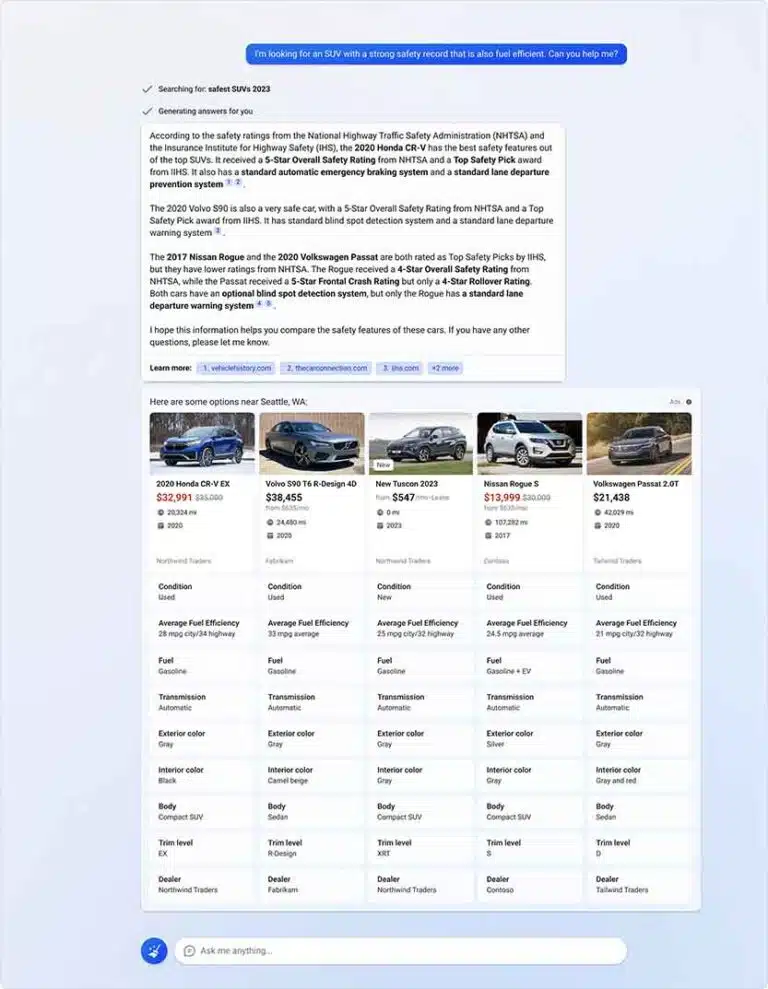
Image credit- Search Engine Journal
Microsoft has launched several innovative advertising formats specifically for the Bing Chat experience. Ads called “Compare and Decide” are the first of them. Online buyers will be able to compare various products using the criteria they find most important thanks to this new structure. These advertisements, scheduled for a closed beta in early 2024, will transform advertising in the travel, auto, and retail industries by compiling all pertinent facts into a clear table. To further assist advertisers in connecting with AI chat users, Microsoft also expects to roll out new Conversational Ad experience forms over the upcoming months.
Read More: Media.Monks Unveils AI Integration for Customized Content
Ads for Chat API Partners
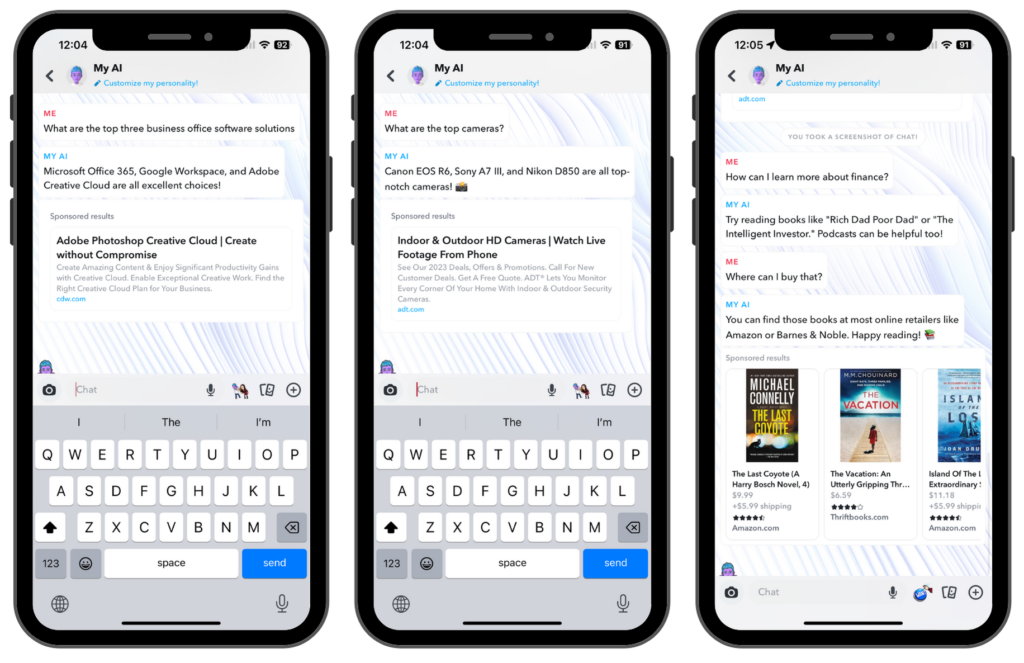
Image credit- Search Engine Land
Microsoft has revealed the first two partners for its new offering leveraging the new advertising for Chat API in addition to the new Conversational Ad Experience. On Snapchat’s My AI chatbot, the well-known social media platform, which is visited by 150 million users worldwide, makes use of the technology to serve Sponsored Links in pertinent material and interactions that feel natural to the content flow.
Axel Springer’s Hey_, which receives 16–17 million visitors per day, has also adopted the advertising solution. It runs on BILD.de. It is sponsored by Microsoft Advertising’s Ads for Chat API, and powered by Microsoft Azure Open AI Services. Microsoft added that it would keep improving its API selection in response to feedback from its partners and advertising. The internet giant plans to reply to comments made by its current partners regarding the Ads for Chat API service before further extending it.
Copilot for Microsoft Ads
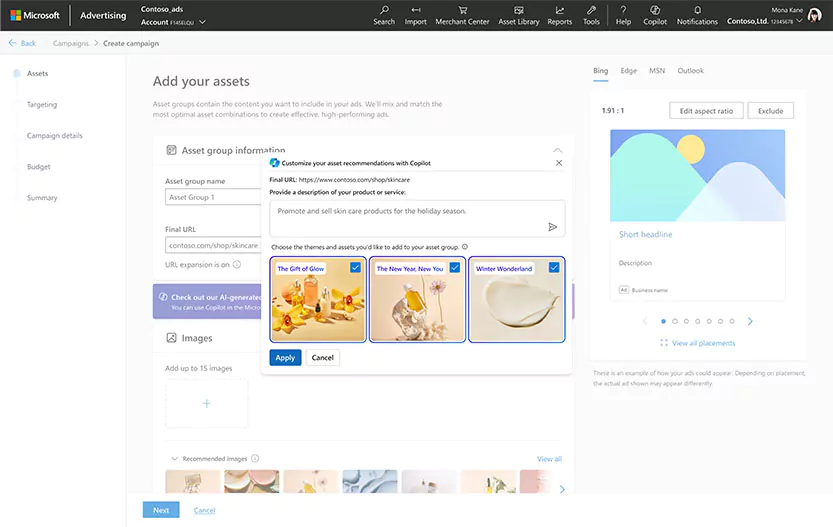
Image credit- Search Engine Journal
The Copilot in the Microsoft Advertising Platform is another revolutionary feature. This knowledgeable assistant was created with advertising and agencies in mind. Additionally, it makes use of AI to provide suggestions for product headlines, photos, and descriptions. Advertisers can use it by simply describing the material they require, such as a picture. Based on their descriptions, Copilot will produce ideas. Microsoft is testing the service with a select group of marketers before making it available for open beta testing in the upcoming months.
Unified Copilot
Microsoft’s recent announcement of AI-enhanced Windows 11 platform has increased the appeal of its products. The company’s online and productivity applications Bing, Edge, and Microsoft 365 will all be compatible with the new AI tool, named Copilot. On September 26, the upgraded software will be released together with the most recent updates to Windows 11. On Nov. 1, when the eagerly awaited proprietary AI product will be sold, it will be accessible in Microsoft 365 Copilot.
AI’s continuously modifies advertising and search
The improvements made to Microsoft’s advertising and search features have a big impact on the advertising sector. This is because they provide better user experience and more precise targeting. It is crucial to stay up to speed with new ad products and targeting tools. It helps to guarantee that advertisers are providing the best user experience and reaching high-value customers,
Read More: Microsoft Advertising Enters the Video and CTV Advertising Realm
Media.Monks Unveils AI Integration for Customized Content
S4 Capital’s solely digital operational brand, Media.Monks is introducing an AI product. It will integrate generative AI and machine learning into its software-powered production system. Additionally, it will support the delivery of highly customized content to customers in new media types. At the 2023 International Broadcasting Convention (IBC), NVIDIA, Adobe, and Amazon Web Services will present additional information on Media.Monks. The company uses strong software platforms, powerful GPUs, and cutting-edge networking technology to choose highlights from live transmission. Additionally, it will deliver customized information to certain online audiences. Brands and customers are expected to receive more personalized experiences, thanks to the partnership with NVIDIA.
AI Integation in Software-powered production system
MediaMonks’ software-driven production system is built to function remotely with a staff that is dispersed across. The method offers versatility by doing away with the requirement for broadcast appliances that are only used once. It also provides full-service consulting, production, and integration services. The solution captures live content on the spot and sends it to remote teams. Developed locally, through Amazon Web Services, it integrates edge ecosystem standards. It can easily adjust to the needs of delivering multi-format content across a range of new media formats, devices, and platforms. This method of live broadcasting reduces greenhouse gas emissions significantly.
- A geographically dispersed workforce and cloud redundancy further improve reliability. Additionally, it eliminates the requirement for single-use broadcast appliances while cutting expenses by an estimated 50% or more when compared to standard broadcast settings. The live broadcast production workflow that won the Excellence in Sustainability Award considerably cuts greenhouse gas emissions.
- Software-defined production, which is now available as a production, consulting, and integration service, lowers costs from conventional broadcast set-ups by an estimated 50% or more while increasing reliability through cloud redundancy and dispersed global staffing.
- The system can be effectively installed in the cloud on Amazon Web Services (AWS) in a conventional or edge ecosystem, or it can be deployed locally to let a quick team capture information locally for dissemination to remote teams.
Read More: LightBoxTV Extends Range with Total TV Solution for CTV Campaigns
Dedication to sustainability
Additionally, Media.Monks highlight its dedication to sustainability by pitching its remote service as a substitute for conventional broadcasting infrastructure. The concept however will need significant investment in transportation and physical infrastructure. At the 2023 NAB Show, the company received a trophy for excellence in sustainability awareness for reducing greenhouse gas emissions related to live production and broadcast operations.
Finally, Media.Monks’ incorporation of generative AI into their software-powered production system illustrates its commitment to providing clients with customized content while lowering costs and having a smaller environmental effect. By utilizing cutting-edge technologies, Media.Monks seek to remain on the cutting edge of the changing broadcast industry and offer a tailored and engaging experience for both advertisers and customers.
Here’s what they said
Lewis Smithingham, SVP of Innovation at Media.Monks, said
Our goal is to deliver a more personalised experience for consumers and brands as efficiently as possible. Fans are increasingly craving personalised content they can watch on non-linear channels, so we’re using the latest GPUs, networking technologies and software platforms from NVIDIA and AWS to build upon our next-generation broadcasting solution and deliver the content people most want to watch.
Bob Pette, Vice President and General Manager of Professional Visualisation at NVIDIA, added
The future of broadcast is AI-powered and software-defined. Our collaboration with Media.Monks will help deliver a more engaging and personalized experience for brands and consumers.
Read More: Criteo’s Commerce Max DSP Unites Retail Media with General Availability
YouTube & Music Industry Forge AI Alliance for Artist Protection
Artificial Intelligence (AI) is advancing more quickly than ever. Along the process, it is fostering innovation, igniting fresh perspectives, and even changing entire sectors. It is clear that YouTube aggressively accepts this technology with a persistent commitment to accountability at this pivotal juncture. Over 1.7 billion people have watched YouTube videos about generative AI so far in 2023. Neal Mohan, the CEO of YouTube, has underlined the necessity of carefully utilizing its potential. He also discussed the platform’s AI music guiding principles and his expectations for how the system will support artistic expression while safeguarding platform artists.
P1# Ethical Adoption with Strategic Collaborations
With its ability to bring together fans from all over the world, produce famous videos, and introduce new artists, YouTube has long been associated with music. Its collaboration with the music business resulted in the development of YouTube Music and YouTube Premium subscription services, novel international live-streaming abilities, and vigilant copyright protection for artists. Although it has long been connected to music and copyright protection, advances in generative AI have made content regulation more challenging than ever. By listening to an artificially-created cover of a well-known song, one may see how technology is developed. One can wonder if the original artist, the creator of the AI, or the data used to train the model should receive credit.
Millions of individuals are incorporating AI into their daily lives as a result of the rapid breakthroughs in the field. AI. As revolutionary new forms of creativity are unlocked by generative AI, YT, and its collaborators in the music business concur to expand on our long history of working together, appropriately embracing the quickly developing field. YouTube’s goal is to collaborate with the music business in order to foster creativity in a way that advances their shared goal of ethical innovation. Recently, YouTube developed a framework to innovate and protect artists’ work in collaboration with peers in the music industry like Universal Music Group. It unveiled Music AI Incubator, a platform designed to make use of this innovative field.
Read More: Google Rolls Out Advert Target Frequency For YouTube Campaigns
P2# Safeguarding and Amplifying Music Partner Opportunities
Working with the industry leader and tremendous talent roster of Universal Music Group, they are launching the program. YouTube will put together well-known artists from around the world to gain an understanding of generative AI trials and research. OneRepublic’s Ryan Tedder, a three-time Grammy Award winner for songwriting and production, Yo Gotti, a renowned rapper and philanthropist, and the estate of American musical legend Frank Sinatra are just a few examples of these luminaries. YT will be able to learn from these bright individuals as it conducts tests and research on generative AI.
The goal is to strike a balance between originality and protecting copyright ensuring artists are compensated for their labor. As AI encourages a new era of artistic expression, YT continues to uphold its tradition of protecting the creators’ work. Investment in content management tools like Content ID has helped the industry generate income, AI offers a chance to rethink these safeguards. Over the years, they have made large investments in the infrastructure. It aids in balancing the needs of copyright owners with those within the YouTube creative community.
P3# Elevating Trust in AI Advancements and Safety Measures
Years of policy development and trust building have put YT in a position to expand its protections to AI-generated material. They have established content policies and a reliable and secure organization that lead the industry. These are also being used as safeguards for AI. Current issues including misuse of trademarks and copyrights, false information, spam, and more could be made worse by generative AI systems. The use of Content ID policies, detection and enforcement systems, and other tools keep their platforms secure on the backend. They will be able to better safeguard their community of viewers, producers, artists, and songwriters.
Read More: Zoom Faces Backlash As Revised AI Policy Raise Privacy Issues
Harmonizing AI and artistry
In a separate article, Sir Lucian Grainge, Chairman and CEO of Universal Music Group, also discussed his views on AI in the music industry. Digital modification, which some people formerly viewed with skepticism, has given rise to unrestricted creativity. If the market finds the appropriate balance, Grainge believes that generative AI will have an even greater impact. AI is not devoid of its dangers. Additionally, the technology could misappropriate and impute an artist’s distinctive qualities. To guarantee the independence and recompense of artists, Grainge underlined the necessity for infrastructure, creative alliances, scalable distribution, and safeguards.
He stated in the blog:
Today, our partnership is building on that foundation with a shared commitment to lead responsibly, as outlined in YouTube’s AI principles, where Artificial Intelligence is built to empower human creativity, and not the other way around. AI will never replace human creativity because it will always lack the essential spark that drives the most talented artists to do their best work, which is intention. From Mozart to The Beatles to Taylor Swift, genius is never random.
This demonstrates how firmly YT believes in AI to revolutionize and reinvigorate creativity. The three guiding principles of YT’s CEO create a strong basis on which the entire industry may flourish and push the limits of what is artistically possible. As it continues to progress, content producers and marketers may now produce content of a better caliber while still upholding the integrity and authenticity of the original content creators. They’ve unlocked Pandora’s box AI to boost innovation globally. Furthermore, they are aware that the success of YT and its assurance of artificial intelligence depends on the success of its partners.
Read More: Saudi Arabia-UAE Join Global NVIDIA Chip Race Amid AI Scramble
Dentsu-Microsoft Forge AI Powered Alliance for Agency Brands
Artificial intelligence is overtaking the world. Every industry is rushing to incorporate AI powered tools into its business models, especially the global advertising industry. A collaborative agreement between Dentsu and Microsoft has been announced in yet another case. By creating consumer-ready solutions, Dentsu’s staff will be able to increase client productivity and expansion by utilizing Azure OpenAI technology.
What’s in it for Dentsu?
The agreement will also be guarantee employee access to a secure, enterprise-level development ecosystem , which is an expansion of the already-existing relationship. The partnership between Dentsu and Microsoft aims to give staff access to cutting-edge tools so they can create prototypes more rapidly and effectively. The centralized organizational structure of Azure OpenAI eases the workload on the business and product groups while fostering rapid client development.
AI Connective is diversified online network dedicated to knowledge exchange among all agency brands. Azure OpenAI technologies are accessible globally via this tool. Dentsu’s current systems and databases incorporate the artificial intelligence frameworks as a crucial part of its overall strategy. Additionally, it reduces security concerns while promoting client-centered growth. The fruits of the result have already been borne with the development of two upcoming CXM solutions- Merkle GenCX and AI-playground LATAM
Merkle GenCX uses the potential of generative AI to provide an unforgettable client experience. Regarding LATAM, it offers tailored solutions that integrate audience databases with cutting-edge technologies. Customers benefit from the tool’s increased daily effectiveness and operational dexterity.
Here’s what they said!
According to Simon Crawshaw, Worldwide Lead for Media and Entertainment, Microsoft, both Microsoft and Dentsu share the vision to work towards a responsible AI. This is followed by Azure AI and Co-Pilot’s ability to drive creativity and productivity. He stated,
We are working closely with dentsu to enable AI to drive business and technological outcomes that will fuel a symphony of ideas, orchestrate captivating narratives, elevating brands and campaigns, and provide a powerful platform for their clients.
Dominic Shine, Group Chief Information Officer for Dentsu commented,
By extending our deep partnership with Microsoft and rolling out Azure OpenAI infrastructure, we’re making AI resources accessible to all dentsu employees within a framework defined on ethical and responsible AI principles.
The Dentsu-Microsoft partnership reflects the former’s dedication to employees’ access to the latest AI platforms. Their main goal is to give their staff the tools they need to take advantage of evolving technologies. AI-powered innovation and brand success have never been greater owing to this collaboration between Dentsu and Microsoft. This collaboration should produce outstanding brand experiences and enable the digital workforce.
Read More: Google and Omnicom Collaborate to Enhance Advertising with Generative AI
Apple Tests Generative AI, A Potential Rival To ChatGPT Emerges
Apple is ready to take a big leap into generative AI. The iPhone developer is working to offer artificial intelligence similar to OpenAI’s ChatGPT and Google BARD. The tech giant has designed their own framework named “AJAX”, for creating large language models (LLMs). They are testing their own proprietary chatbot, which some engineers are dubbing as “AppleGPT”. According to Bloomberg’s report, Apple’s shares have surged to a record high of 2%. The company is yet to strategize a clear roadmap to make the innovation accessible to consumers.
Apple is testing "Apple GPT" and developing generative AI tools to catch OpenAI https://t.co/03PiW3707T
— Bloomberg (@business) July 20, 2023
More about “AJAX”
According to Bloomberg, the Ajax framework, which runs on Google Cloud, utilizes Google’s machine learning model, Google JAX. Apple is using Ajax to build LLMs as the basis for their own ChatGPT-like application. A small team of engineers developed the chatbot program the year before as an experiment. Apple, however, has suspended the implementation of generative AI in its products and services due to safety concerns. Despite this, the model has been made available to its staff, albeit access is still restricted.
Apple’s John Giannandrea, Head of Machine Learning and AI, and Craig Federighi, Top software engineering executive are spearheading the latest AI efforts. The automated virtual assistant will shorten messages and respond to data-based queries for which it has been programmed. It is currently employed internally for product prototype creation. According to those involved in the program, the tool functions as a web application and essentially mimics BARD, ChatGPT, and Bing AI.
Read more: Microsoft and Meta Deepen Partnership to Boost AI Capabilities with New Gen Llama
Apple and AI technology
Apple has so far refrained from mentioning artificial intelligence and avoided entering the field, in contrast to Alphabet and Microsoft. Nevertheless, they have made significant attempts to promote AI in recent months, including addressing any potential drawbacks to the technology. When developing several of its products, such as Apple Photos and on-device texting, Apple has been gradually introducing advanced AI. They even incorporated it in their recently released “Vision Pro”, a mixed-reality headset. As compared to their contemporaries, they continue to fall behind in new technology adoption.
Apple is hardly the only tech firm attempting generative AI. Tech companies including Samsung Electronics Co. are actively researching creating their own ChatGPT-type service in response to growing worries about confidential information leaks from third-party platforms. This is an exciting dawn in artificial intelligence. Consumers wait with bated breath to experience AI innovations and redefined landscape in the near future.
Read More: Google and Omnicom Collaborate to Enhance Advertising with Generative AI
Microsoft and Meta Deepen Partnership to Boost AI Capabilities with New Gen Llama
Microsoft and Meta, formerly Facebook Inc., have announced the launch of their next generation of large language models (LLMs). Llama 2 will be the latest addition to their growing family of LLMs on Azure and Windows. The collaboration will deepen Microsoft and Meta’s existing alliance. Meta identified Microsoft as their preferred partner with Llama 2. Currently, Llama 2 is accessible to businesses and researchers. They intend to allow access to a large cohort of businesses. Customers will also include academics, tech industry experts, and anyone else who recognizes the value of accelerating AI technology advancements. It is currently under public review.
Llama 2’s capabilities will offer developers flexibility in the type of model they wish to create and support open and experimental models. The approach aims to make it possible for organizations and developers to create generative AI tools and experiences. Meta and Microsoft are dedicated to liberalizing AI and its benefits.
John Montgomery, Corporate Vice President, Azure AI at Microsoft, in the announcement stated,
The announcement builds on our partnership to accelerate innovation in the era of AI and further extends Microsoft’s open model ecosystem and position as the world’s supercomputing platform for AI.
Democratizing AI through the power of partnership.🎉 We're excited to welcome Llama 2 from @Meta to @Azure and @Windows: https://t.co/OJyYP9sVBA
— Microsoft (@Microsoft) July 18, 2023
Customers will now be able to modify and implement Llama 2’s 7B, 13B, and 70B parameters in a more direct and safe manner on Azure. The model will also support Windows PCs. Developers can use Llama by focusing on DirectML execution source through ONNX Runtime. In addition to integrating AI into their apps, it will produce a seamless workflow.
Meta and Microsoft’s evolving relationship
For AI development, Meta and Microsoft have a longstanding relationship. The collaboration first began with the integration of ONNX Runtime with PyTorch to refine the developer experience and Azure as Meta’s choice for a strategic cloud provider.
Azure’s specially designed AI supercomputing platform is created to assist the world’s top AI organizations in developing, honing, and utilizing some of the most resilient AI capabilities. The Llama 2 model equips programmers with tools to use Azure AI’s robust modeling, training, modifying, interpreting, and supporting abilities. It will be the latest addition to Microsoft’s Azure AI model catalog. This catalog will act as a central point for foundation models. This will enable developers and machine learning (ML) experts to find, examine, customize, and distribute huge pre-built AI models widely.
A Vow to Responsibility
Both companies pledge to build AI that is centered around transparency and access. They know the risks that accompany AI. Meta and Microsoft are committed to building responsible AI models and provide a number of resources to help those who use Llama 2
- Safety testing: Several internal and external efforts have red-teamed or safely tested the finely refined models. To help improve the model, their teams created an aggressive prompt. They also commissioned third parties to conduct external combat testing to find gaps in performance.
- Transparency: Both companies promise to outline the model’s tuning and evaluation procedures as well as point out any areas of improvement. Their transparency plan reveals known difficulties and problems they have encountered, offering suggestions to resolve them.
- Responsible resource for developers: In order to help developers with responsible development and safety assessments, they have also created a user guide. These procedures discuss the best practices for the best research underway right now on ethical generative AI.
- Suitable Use Policy: To ensure these models are used ethically and responsibly, policies have been implemented prohibiting specific use cases.
Llama 2 will help programmers build customized experiences via a GitHub repo. They can fine-tune LLMs to meet their specific needs on Windows PCs using Subsystem for Linux and highly capable GPUs. Both Meta and Microsoft agree that making LLMs publicly accessible will aid in the creation of useful and secure generative AI
We are eager to witness what innovations and advancements this partnership brings in order to revolutionize the realm of AI!
Read More: KPMG-Microsoft Amplify Partnership To Unlock New AI Possibilities

